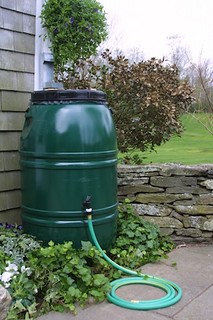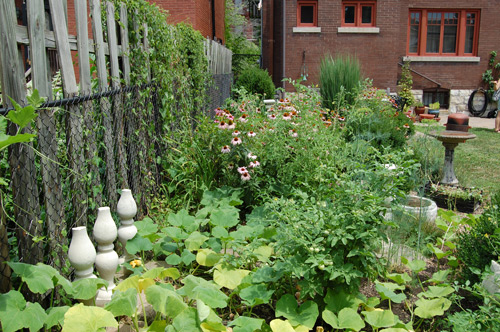Cleaning the urban environment with "sustainable backyards"

Posted October 2, 2012 at 12:29PM
Chicago has a great new program to help residents join the city in reducing stormwater pollution, cleaning the air, cooling “heat islands,” and improving public health. It’s called Sustainable Backyards, and the genius of it is that it’s educational, participatory, and effective at the same time.
Basically, the city provides financial assistance in the form of rebates that reimburse citizens for up to 50 percent of the cost of installing trees, native plants, compost bins, and/or rain barrels. There are reasonable limits based on the value of the ecosystem services provided by each product: you can get a rebate for up to $100 for planting a tree, for example, or up to $40 for installing a rain barrel.
As I’ve noted before, the value of a tree can be substantial: The net cooling effect of a young, healthy tree is said to be equivalent to ten room-size air conditioners operating 20 hours a day. They also absorb carbon dioxide and release oxygen, among many other functions. Plantings and rain barrels can help stave off runoff that occurs when rainfall runs into overburdened sewers and receiving rivers, streams, and lakes, picking up pollutants along the way. Chicago was one of the cities profiled in NRDC’s study of water pollution and green infrastructure solutions, Rooftops to Rivers II.  NRDC’s water program attorney Larry Levine says that “stopping runoff with green infrastructure on private property is a crucial part in the solving [a] city’s stormwater problems and improving the health of our communities.”
NRDC’s water program attorney Larry Levine says that “stopping runoff with green infrastructure on private property is a crucial part in the solving [a] city’s stormwater problems and improving the health of our communities.”
The Chicago-based Center for Neighborhood Technology, whose work on transportation and housing costs is seriously impressive, has been selected by the city to manage the Sustainable Backyards program. In a press release, the Center explains some of the benefits:
“The SusBy program was created to alleviate basement and neighborhood flooding and reduce the flow of polluted water into our rivers and Lake Michigan using green infrastructure. Green infrastructure, as opposed to gray infrastructure (such as pipes), uses natural processes in order to infiltrate, evaporate, and/or reuse stormwater. Many of the green infrastructure practices encouraged have a multitude of benefits, from providing wildlife habitat to cooling the air and fostering a sense of community. Educational workshops will continue to be offered to residents who want to learn more about the SusBy program and the basics of making their green spaces more sustainable.”
As NRDC’s report documented, Chicago is not the only city addressing these issues, but I do love the accessible-to-everyone simplicity of the Backyards program.
Another city that is promoting green infrastructure solutions by residents is Seattle. Rain is no small matter in Seattle – its nickname has the word “emerald” for a reason – and, as part of a campaign by Washington State University and the non-profit Stewardship Partners, rain gardens are sprouting up all over the city. The goal is to install 12,000 rain gardens in Puget Sound communities by 2016.
This video is a great introduction to the issue and to the program:
Related posts:
- What trees mean to communities: more than you may think (July 31, 2012)
- Outstanding urbanism, transit, & state-of-the-art green infrastructure, beautifully mixed (June 6, 2011)
- A neighborhood tour of green infrastructure to control runoff (March 22, 2011)
- Urban stormwater runoff 101, by my NRDC colleagues (August 20, 2010)
- Chicago's spiffy new bike station (April 21, 2010)
- Redrawing the American City: sprawl and smart growth in Chicago (January 6, 2010)
- Seattle's Green Factor, absorbing rainwater and softening the urban landscape (March 24, 2009)
Move your cursor over the images for credit information.
